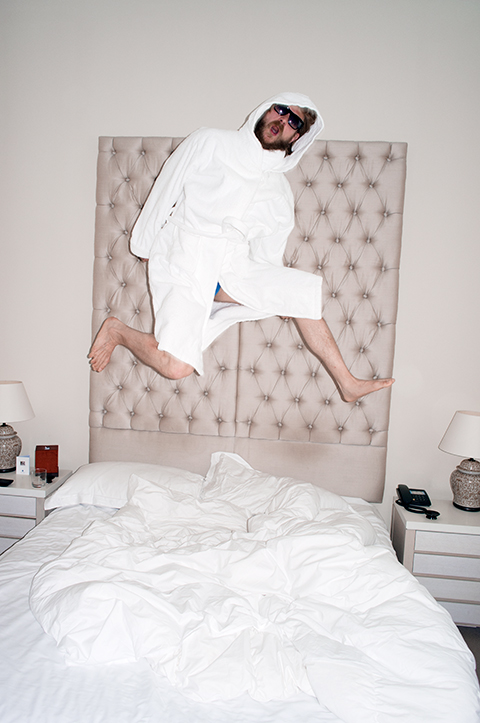Kasia Bielska
Artist Feature
Every week an artist is featured whose single image was published by Der Greif. The Feature shows the image in the original context of the series.
Andy Kania
Oct 05, 2012
“We want the photographer to move in the house of love and death like a spy, and that those being photographed by him are oblivious to the presence of his camera. Not even the most distinct awareness of what photography is or could be, will ever be able to take away from the fascination that inspires an image recorded by the attentive eye of a photographer, in the right moment of an unexpected event.” Susan Sontag, from: Regarding the pain of others The pain Susan Sontag is evoking translates, in the case Andy Kania’s photographs, into looking at that what is broken and wasted and into the pain of the German everyday life. More precisely, the images project a gaze onto those who do not fit the frame, who are trying to escape from it. These people are not whole, untouched, but rather exhausted, with life itself written across their faces, having left marks on their bodies. It is precisely this defectiveness which attracts Kania and which makes people special in his eyes. The spy, who is according to Susan Sontag the best documentarist, due to his ability to capture the moment, doesn’t partake in anything voyeuristic in Kania’s case, despite of the bright flash light which seems to expose and denude human misery. On the contrary, he identifies with and becomes part of the very scene, which provides him with the opportunity to catch just the right instant for the unnoticed “shooting”. The accumulation of individuals, often densely crowded together in his works, seems to blur into one contemporary scene of mass suffering. Through his photographs and his way of seeing, Andy Kania deeply penetrates the realities of the German way of life and sensibility, located far away from the oases of “the caramel cappuccino to go”, the shining places of wellness and success, and all those seeking this kind of imposed perfection. He portrays an image of Germany that most people are only too willingly trying to block out. He exposes himself consciously to the other side of the medal; searching for it and pointing his finger at the painful spots. The flash of his camera denounces the make-up and exposes its ugliness. The resulting photographs are deliberately brutal, provoking and disturbing, while at the same time being in no lack of subtle humour, ironic lightness and playfulness. They do not demand the spectator’s concernment, thus escaping the trap of presenting a voyeuristic outlook of the pain witnessed. Rather, Kania invites us to connect with the images presented in two distinct ways. On the first plan, by way of a mental act, in which Kania plays the mediator between the viewers and the “friends from his family album”, his army of good things coming from the bottom.
Veronika Somnitz, Curator


